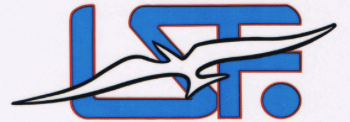LOFT Saturday Fly for Fun Sessions
Purpose:
Offer coaching to less experienced flyers
Test equipment
Refine sailplane set ups
Learn to fly from high-starts or a winch
Encourage non-members to join the Club.
LSF Task
Fly for Fun (Fly what you Bring)
Field Operations:
Set up would be done by whomever gets there first. Wind direction will dictate set up location on the field. Frequency control will be in place using a portable frequency board. Signage would be placed at key locations around the field. All sessions will start with a brief meeting and pilots sign in sheet with flying beginning at 9:30 and end around noon unless other activities are planned for that day.
Equipment Needed:
High Starts – bring your own plus any Club High Starts
Winches – one will be used initially until we determine need.
Club Plane and radio – will be available to all members and non-members.
Signs – these signs would be put up at the field to attract attention to the activity. One sign will be the normal LOFT sign; the other sign will be for the Fly for Fun session including an invitation for the public to join us.
Portable Field pack – it will contain the frequency control board, clothes pins, sign-up sheets, pens, LOFT Tri-folds, etc.
All sessions will start at 9:30 am and end around noon unless we want to fly more.
Thermal: Small rising column of air due to surface heating.
Wind: Air moving (sometimes with considerable force) from an area of high pressure to an area of low pressure.
High Pressure: A mass of air that presses down strongly on the surface of the Earth because it is being cooled and is therefore more dense
Low Pressure: A system in which air pressure decreases toward the center, associated with unsettled weather, usually formed by a mass of warm air being forced up by cold air.
Wind Shear: Any sudden change in wind speed or direction.
Updrafts: The upward movement of warm air. Updrafts can be found beneath and inside all types of cumulus clouds.
Downdrafts: A small-scale column of air that rapidly sinks toward the ground, usually accompanied by precipitation as in a shower or thunderstorm. A downburst is the result of a strong downdraft.
Cloudburst: A strong downdraft of air from a cumulonimbus cloud, of limited duration and often associated with intense thunderstorms.
Convection currents: The currents caused by hot air rising and falling. Hot air expands and is therefore less dense than its cooler surroundings, thus it rises; as it cools it contracts, becomes more dense and sinks down creating a rolling motion.
Dust Devil: A small atmospheric vortex not associated with a thunderstorm, which is made visible by a rotating cloud of dust or debris Dust devils form in response to surface heating during fair, hot weather.
Orographic Lift – Lifting of air caused by its passage up and over mountains or other sloping terrain.
Ridge – An elongated area of relatively high atmospheric pressure
Squall Line – A solid or nearly solid line or band of active thunderstorms.
Virga – Streaks or wisps of precipitation falling from a cloud but evaporating before reaching the ground.
Wave – In meteorology, the intersection of warm and cold fronts.



